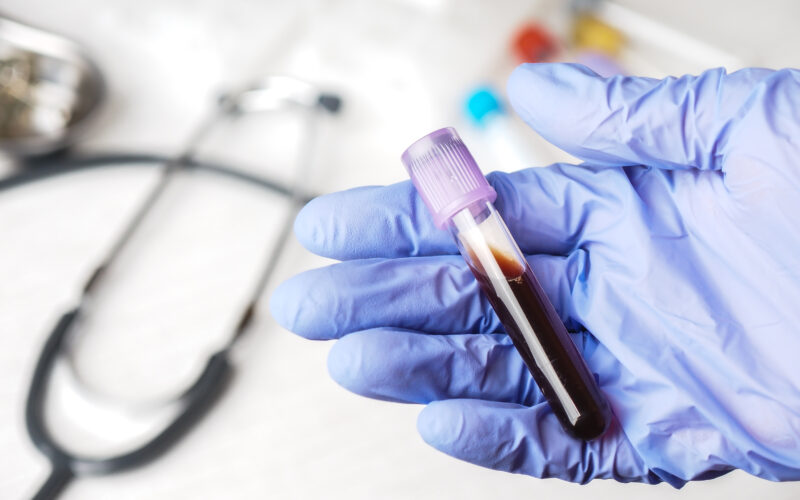Olema Pharmaceuticals Inc. (NASDAQ:OLMA) is a clinical-stage biotechnology company founded with a singular mission: to transform the treatment landscape for hormone-receptor-positive cancers by developing more effective, next-generation endocrine therapies. Established in 2007 and headquartered in San Francisco with research operations in Cambridge, Olema was built on decades of scientific work focused on the estrogen receptor, a central driver of the most common form of breast cancer—estrogen receptor-positive, HER2-negative (ER+/HER2−) disease. From inception, the company positioned itself as an expert in endocrine resistance biology, aiming to design therapies that overcome the limitations of older hormonal treatments such as tamoxifen, aromatase inhibitors, and fulvestrant. Olema’s founding vision was anchored in creating a best-in-class oral therapy capable of degrading and fully antagonizing the estrogen receptor with greater potency, longer durability, and improved tolerability compared to legacy endocrine agents.
The company’s scientific foundation led to the development of its lead candidate, palazestrant (OP-1250), a complete estrogen receptor antagonist (CERAN) and selective estrogen receptor degrader (SERD). Olema positioned palazestrant as a next-generation therapeutic designed to treat patients with advanced and metastatic ER+/HER2− breast cancer, a market representing over two million women worldwide. What makes Olema’s approach distinct is its commitment to building a differentiated molecule that delivers both strong antagonism of the estrogen receptor and efficient degradation, targeting a mechanism that has long been validated in oncology but limited by suboptimal drugs and inconvenient injection-based delivery. By engineering palazestrant as an orally available, once-daily pill, Olema sought to eliminate the clinical compromises associated with older SERDs and expand access to endocrine therapy across global patient populations.
Over the years, Olema strengthened its scientific capabilities through strategic expansion, operational scaling, and high-profile collaborations. The company attracted leading oncology researchers, medicinal chemists, and translational scientists, all working together to validate the therapeutic potential of its CERAN/SERD platform. Its research programs grew beyond monotherapy ambitions to include combination therapy development, reflecting Olema’s belief that targeting the estrogen receptor must evolve alongside modern breast cancer regimens. This led to major partnerships—most notably with Novartis—to evaluate palazestrant in combination with CDK4/6 inhibitors such as ribociclib. These partnerships elevated Olema’s strategic position in the oncology field, enabling the company to integrate palazestrant into established treatment backbones and pursue broader clinical applications.
Olema’s evolution continued as the company advanced from preclinical development to human trials, achieving key milestones that solidified its role in the competitive endocrine therapy landscape. Early clinical data demonstrated favorable tolerability, strong receptor engagement, and encouraging antitumor activity, supporting rapid progression into pivotal trials. As a reflection of its scientific progress and maturing corporate structure, Olema became a publicly traded company, giving it access to the capital required for late-stage clinical development and potential commercialization. This transition into the public markets also showcased the company’s confidence in its research, leadership, and long-term vision to deliver a transformative breast cancer therapy.
Today, Olema Pharmaceuticals is recognized as one of the most focused and scientifically specialized companies in the field of hormone-receptor-positive breast cancer drug development. Its lead asset palazestrant is now advancing through Phase 3 clinical studies, representing the culmination of more than a decade of research into estrogen receptor biology. With a deep understanding of endocrine resistance, a differentiated drug design, and a strategic commitment to combination therapy development, Olema has positioned itself as an emerging leader in next-generation endocrine oncology. The company’s background reflects a blend of scientific innovation, mission-driven focus, and strategic collaboration, defining its identity as a biotechnology company committed to addressing one of the most urgent and widespread unmet needs in global cancer treatment.
Roche’s Breakthrough Phase 3 Results Create A Powerful Validation Tailwind for Olema
Olema Pharmaceuticals (NASDAQ:OLMA) is entering one of the most important chapters in its development history, strengthened by a major external catalyst that came from an unexpected source: Roche’s positive Phase 3 results for its breast cancer drug giredestrant. Because giredestrant belongs to the same therapeutic class as Olema’s lead candidate palazestrant (OP-1250), this milestone has electrified investor sentiment. It provided what the market had long been waiting for—direct, real-world confirmation that oral SERDs can succeed in pivotal trials against estrogen receptor-positive, HER2-negative (ER+/HER2−) breast cancer. This validation does not eliminate Olema’s clinical risk, but it meaningfully lowers the skepticism around whether the drug class can achieve Phase 3 success. For a biotech whose entire valuation is anchored around one key asset, this shift in class-level confidence is a major bullish tailwind.

CHECK THIS OUT: Corcept (CORT) Skyrockets 1,534% in 10 Years and Immuneering (IMRX) Reports 86% 9-Month Survival in Pancreatic Cancer.
Expanded Investor Confidence Reinforces the Bullish Setup
The reaction to Roche’s announcement was immediate and aggressive. Olema’s share price surged, reflecting a sharp change in sentiment driven by the belief that palazestrant may now have a higher probability of success in its ongoing Phase 3 trials. Prior to this development, Olema’s narrative was dominated by uncertainty surrounding clinical durability, trial execution, sustained cash burn, and continued losses. Now, with a major pharmaceutical giant proving that an oral SERD can succeed in a pivotal breast cancer study, investors have begun re-evaluating the risk–reward profile of Olema. External validation is one of the strongest catalysts in biotech investing, and Roche’s positive Phase 3 results put Olema in a stronger credibility position than at any point in company history.
Palazestrant’s Commercial Potential Represents a Multi-Billion Dollar Opportunity
For investors building a bullish thesis, a key pillar is the commercial magnitude of Olema’s target market. ER+/HER2− breast cancer is the most common subtype of breast cancer globally, representing more than 70 percent of all diagnosed cases. This therapeutic area generates tens of billions in annual revenue across hormonal therapies, CDK4/6 inhibitors, and emerging targeted treatments. The transition from older endocrine therapies to next-generation oral SERDs is already underway, driven by improved tolerability, better patient adherence, and potential superiority against endocrine resistance. Palazestrant is designed to be a best-in-class oral SERD that could become a foundational therapy in both monotherapy and combination regimens. The company’s combination trials with ribociclib further expand the commercial landscape, positioning palazestrant to capture value across multiple treatment lines. For a biotech with a modest market capitalization, the addressable market provides extraordinary upside potential.
Phase 3 Progress and Clinical Pipeline Depth Support a Long-Term Growth Outlook
The bullish case for Olema intensifies when analyzing the trajectory of its clinical program. The Phase 3 OPERA-01 monotherapy trial and OPERA-02 combination trial represent the most important inflection points for the company. Each successful readout has the potential to dramatically shift OLMA’s valuation because palazestrant is being developed for use both alone and in combination with standard-of-care agents. These combined indications significantly expand the total patient population Olema can reach. Moreover, the company continues to invest in early-stage research programs that complement palazestrant’s mechanism, suggesting a future pipeline beyond the lead therapy. Although most of the company’s valuation today centers on palazestrant, the emergence of a more diversified pipeline over time could strengthen the long-term growth narrative.
Strategic Positioning and Industry Timing Improve Olema’s Competitive Edge
Timing matters in biotech, and Olema is entering the pivotal trial and commercialization window at an ideal moment. The oral SERD class has gained strong momentum and investor confidence, driven by clinical successes across several pharmaceutical companies. As endocrine resistance remains a massive challenge in breast cancer treatment, the field is shifting rapidly toward newer SERD-based approaches. Olema’s palazestrant benefits from this timing because oncologists, regulators, and investors are now more willing to embrace next-generation endocrine therapies. This creates a strategic advantage where Olema is pursuing regulatory success at a time when the drug class is already clinically validated, medically accepted, and commercially attractive.
Market Sentiment and Valuation Dislocation Present a Strong Upside Case
Despite the recent surge in share price, Olema remains undervalued relative to its long-term potential. The Simply Wall St community fair values range widely from US$2.73 to US$27.25, reflecting the uncertainty around clinical catalysts but also the potential for massive breakout performance if trial results are successful. This valuation gap indicates that the stock is deeply misunderstood and highly sensitive to upcoming data readouts. For investors able to tolerate volatility, valuation dislocation provides a compelling asymmetric setup. The downside risk exists but is limited compared to the potential upside—which could be several multiples of the current share price if palazestrant proves successful in Phase 3 and secures regulatory approval.
Partnership Catalysts Could Amplify the Bullish Narrative
A bullish thesis must also consider future catalysts beyond clinical results. Olema is an ideal partnership target for larger pharmaceutical companies seeking to expand their oncology pipelines. With Roche’s success validating the SERD approach, major pharma companies looking to enter or strengthen their footprint in hormone-driven breast cancer may view Olema as a strategic acquisition or co-development opportunity. Such partnerships typically include substantial upfront payments, shared commercialization responsibilities, and global distribution advantages. Even before full clinical results are available, Olema’s validated drug class and Phase 3 readiness make it a prime target for partnership discussions.
Long-Term Investors See the Roche Data as a Turning Point
The shift in perception created by Roche’s Phase 3 giredestrant results cannot be overstated. Before this, oral SERDs had an inconsistent track record, with multiple failures causing skepticism among analysts and investors. Now, sentiment has decisively shifted toward optimism. This does not guarantee Olema’s success, but it significantly boosts the probability and reduces the perceived risk profile of palazestrant. Investors now see Olema as a biotech with derisked mechanisms, a validated therapeutic approach, and pivotal trials underway—all of which align with breakout-growth potential. These dynamics support a strong bullish setup for long-term investors seeking exposure to high-growth oncology innovation.
READ ALSO: Tiziana (TLSA) Surges 143% in 2025 and Immuneering (IMRX) Reports 86% 9-Month Survival in Pancreatic Cancer.








